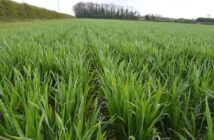Sub-Saharan Africa will need to transform and intensify crop production to avoid over-reliance on imports and meet future food security needs, according to a new report.
Recent studies have focused on the global picture, anticipating that food demand will grow 60 percent by 2050 as population soars to 9.7 billion, and hypothesizing that the most sustainable solution is to close the yield gap on land already used for crop production.
Yet, although it is essential to close the yield gap, which is defined as the difference between yield potential and actual farm yield, cereal demand will likely not be met without taking further measures in some regions, write the authors of the report published in the Proceedings of the National Academy of Sciences (PNAS).
In particular, sub-Saharan Africa faces the prospect of needing greater cereal crop imports or expanding onto previously unfarmed lands, which will lead to a sharp uptick in biodiversity loss and greenhouse gas emissions in the region.
“No low-income country successfully industrialized in the second half of the 20th century while importing major shares of their food supply,” said co-author Kindie Tesfaye, a scientist with the International Maize and Wheat Improvement Center (CIMMYT).
To meet food demand without planting on previously unsown lands, farmers in sub-Saharan Africa will need to close yield gaps, but in addition consider options to sustainably intensify the number of crops grown on existing croplands by rotation and expanding the use of irrigation in a responsible manner.
“If intensification is not successful and massive cropland expansion is to be avoided, sub-Saharan Africa will become ever more dependent on imports of cereals than it is today,” Tesfaye said, adding that the African Development Bank highlights self-sufficiency in agriculture as a principal goal of its action plan for agricultural transformation.
More than half of global population growth between now and 2050 is projected to occur in Africa, where it increased 2.6 percent each year between 2010 and 2015, according to data from the U.N. Department of Economic and Social Affairs.
In sub-Saharan Africa, population will increase 2.5 times overall by 2050, and demand for cereals will triple, while current levels of cereal consumption already depend on substantial imports.
For the study, titled “Can Sub-Saharan Africa Feed Itself?”, scientists focused on 10 countries where cereals make up half of calories in the human diet and half the cropland area that are part of the Global Yield Gap Atlas, which is developed using local data, to estimate food production capacity on existing cropland. Of the 10 countries, seven do not have enough land area to support expansion.
Except in Ethiopia and Zambia, cereal yields in most countries in the region are growing more slowly than population and demand, while total cropland area has increased a massive 14 percent in the last 10 years. Although Ethiopia shows progress in crop production intensification, other countries lag behind, Tesfaye said.
“With improved cultivars, hybrid seeds, coupled with increased use of irrigation, fertilizers, modern pest management practices and good agronomy, it’s possible to achieve accelerated rates of yield gain, but more research and development are required,” he added.
“Can Sub-Saharan Africa Feed Itself?” appears in the Proceedings of the National Academy of Sciences the week of December 12. It is co-authored by Wageningen University, University of Nebraska-Lincoln, and multiple CGIAR centers, regional and national Institutions in Africa.




